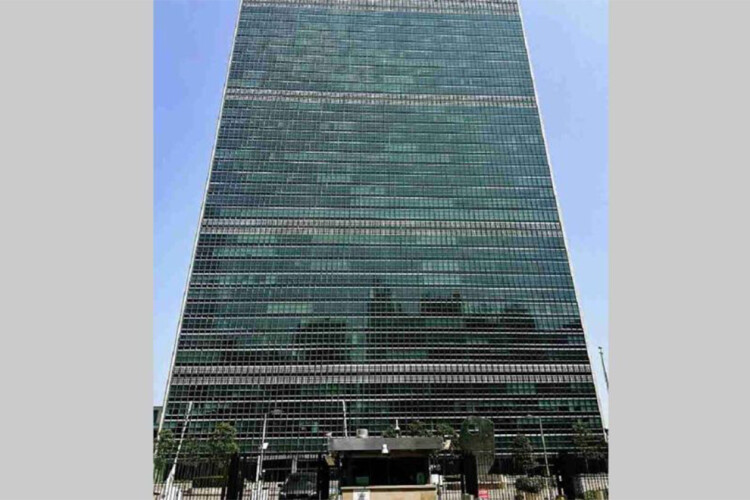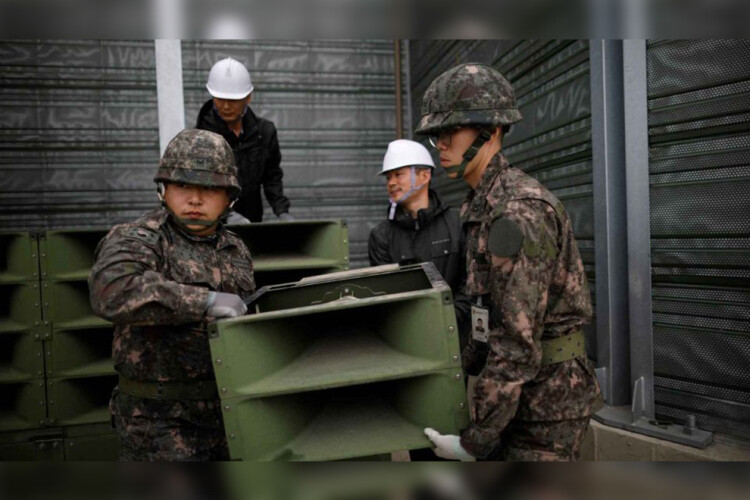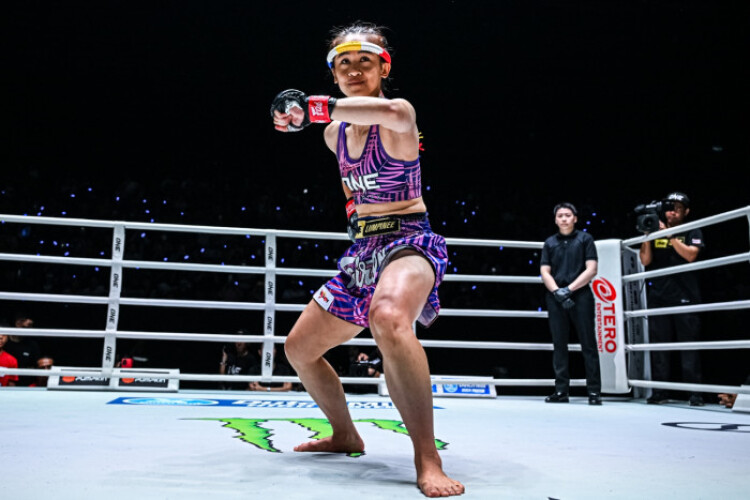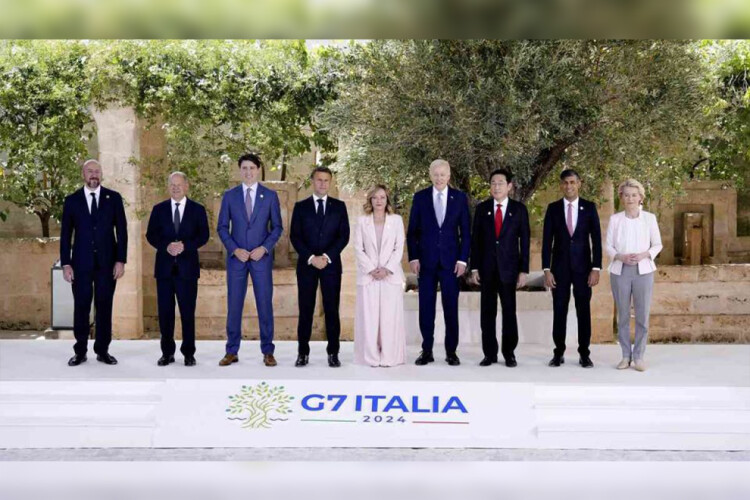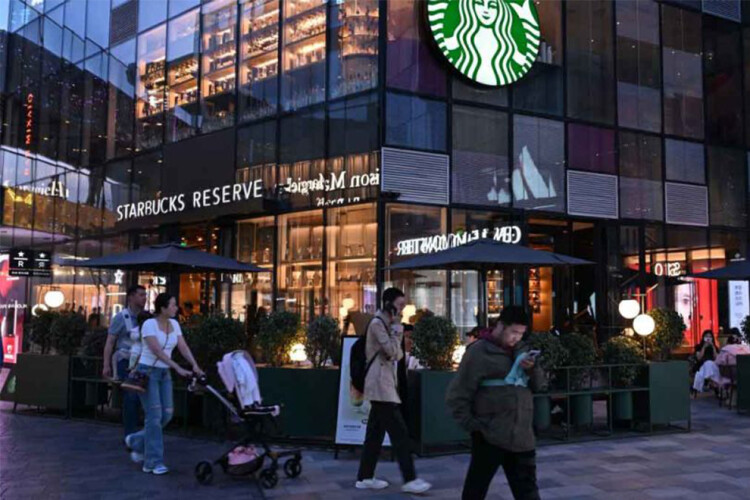
BEIJING – “If I’m not at Starbucks, I’d be on the way to Starbucks.”
This was a common saying among netizens in China more than a decade ago, when patronising the American coffee chain was associated with being trendy and cosmopolitan.
But how times have changed for Starbucks, which has lost its social cachet as well as its status as the largest coffee chain in China to Chinese rival Luckin.
Now, in a rare move, the US coffee giant – which has long defended its premium positioning in China – has cut prices for its tea-based beverages this summer.
About a dozen of Starbucks’ non-coffee drinks, which include Frappuccinos, iced shaken teas and tea lattes, now cost as little as 23 yuan (S$4.10) each after an average 5 yuan discount, in a promotion effective from June 10 at its stores across China.
Starbucks promoted its new drink prices on its official social media channels in China, branding it as a “summer special price”. Prices of its coffee drinks remain unchanged, ranging from 30 yuan for an Americano to 41 yuan for a cheese latte.
In recent years, Starbucks has been losing market share to major Chinese coffee chains such as Luckin Coffee and Cotti Coffee, which offer cheaper drinks for customers to grab on the go.
Its promotion comes as the Chinese tighten their belts amid a weakened economy, protracted property slump and difficult job market.
While Starbucks had previously said it would not engage in price wars, it has introduced smaller drink sizes and coupons to appeal to a wider consumer base in its second-biggest market after the US.
The prices of its drinks are now closer to those from upscale Chinese tea chains and Luckin, with the latter offering aggressive discounts all year round.
Checks by The Straits Times showed that the price of iced tea on Luckin’s app was 26 yuan, but consumers have to pay only 14 yuan after discounts.
Starbucks China chief growth officer Tony Yang said on the company’s official account on Chinese social media WeChat that its improved “non-coffee” products will, along with its core coffee offerings, “better meet the diversified needs of customers”.
The promotion is aimed at the afternoon segment, with the company marketing it as “coffee in the morning, non-coffee in the afternoon”, he added.
While Starbucks’ official promotional materials steered clear of calling it a price cut, the price change was picked up by netizens and Chinese media outlets, some of whom called it an overdue move by the normally “aloof” company.
A user on the Chinese social media platform Weibo wrote: “If it didn’t reduce prices, soon it won’t be able to sell a single cup of drink.”
Starbucks, which entered the Chinese market in 1999 and once had a store inside the Forbidden City in Beijing, has struggled to reinvent itself after its business, which largely relied on dine-in experiences, was severely disrupted by the Covid-19 pandemic.
Around 2021, nimbler Chinese competitors like Luckin adopted aggressive price cuts and started launching new flavours, giving Starbucks a run for its money.
Luckin also capitalised on the pick-up and delivery model by downsizing its stores into small ones with no seating, drastically saving on rent, labour and maintenance costs.
By 2023, Luckin overtook Starbucks as the largest coffee chain in China, in terms of sales and number of stores.
As at March 2025, Luckin has more than 24,000 outlets and reported a net revenue of US$1.2 billion (S$1.5 billion), while Starbucks has around 7,750 stores and generated about US$740 million in net revenue.
Starbucks is not the only foreign coffee brand facing pressures in China. British coffee chain Costa, which entered China in 2006 and once competed closely with Starbucks, has been quietly closing down stores across China and has only around 500 stores.
Foreign brands like Starbucks have lost their lustre among Chinese consumers, amid rising scepticism towards Western consumerism and a greater emphasis on cultural pride.
Starbucks is now distancing itself from Luckin and focusing instead on lower-tier cities and counties, where the brand still retains a more premium status and competition is less stiff.
The US giant has also been looking to revive its business in China by selling stakes in it. In May, Bloomberg reported, citing unnamed sources, that it has started the process by contacting several potential investors.
Ms Allison Malmsten, a public research director at research firm Daxue Consulting, noted that lowering prices is always a risk, as it is harder to keep customers if prices rise again. “But given the circumstances, it seems like a measured risk from Starbucks,” she told ST.
Ms Olivia Plotnick, who runs social media marketing agency Wai Social in Shanghai, said while Starbucks was a pioneer in China’s coffee industry, chances for it to come up tops again are slim as it is in a tough spot.
Its current strategy to capture market share in lower-tier cities is a race against local brands, which will be able to move faster and cut prices, she noted.
She told ST: “Eventually, (Starbucks) will face the same problems that it does in places like Shanghai with high competition. So in order to survive, it will have to consider how to position itself.”
Asia News Network/The Straits Times
This was a common saying among netizens in China more than a decade ago, when patronising the American coffee chain was associated with being trendy and cosmopolitan.
But how times have changed for Starbucks, which has lost its social cachet as well as its status as the largest coffee chain in China to Chinese rival Luckin.
Now, in a rare move, the US coffee giant – which has long defended its premium positioning in China – has cut prices for its tea-based beverages this summer.
About a dozen of Starbucks’ non-coffee drinks, which include Frappuccinos, iced shaken teas and tea lattes, now cost as little as 23 yuan (S$4.10) each after an average 5 yuan discount, in a promotion effective from June 10 at its stores across China.
Starbucks promoted its new drink prices on its official social media channels in China, branding it as a “summer special price”. Prices of its coffee drinks remain unchanged, ranging from 30 yuan for an Americano to 41 yuan for a cheese latte.
In recent years, Starbucks has been losing market share to major Chinese coffee chains such as Luckin Coffee and Cotti Coffee, which offer cheaper drinks for customers to grab on the go.
Its promotion comes as the Chinese tighten their belts amid a weakened economy, protracted property slump and difficult job market.
While Starbucks had previously said it would not engage in price wars, it has introduced smaller drink sizes and coupons to appeal to a wider consumer base in its second-biggest market after the US.
The prices of its drinks are now closer to those from upscale Chinese tea chains and Luckin, with the latter offering aggressive discounts all year round.
Checks by The Straits Times showed that the price of iced tea on Luckin’s app was 26 yuan, but consumers have to pay only 14 yuan after discounts.
Starbucks China chief growth officer Tony Yang said on the company’s official account on Chinese social media WeChat that its improved “non-coffee” products will, along with its core coffee offerings, “better meet the diversified needs of customers”.
The promotion is aimed at the afternoon segment, with the company marketing it as “coffee in the morning, non-coffee in the afternoon”, he added.
While Starbucks’ official promotional materials steered clear of calling it a price cut, the price change was picked up by netizens and Chinese media outlets, some of whom called it an overdue move by the normally “aloof” company.
A user on the Chinese social media platform Weibo wrote: “If it didn’t reduce prices, soon it won’t be able to sell a single cup of drink.”
Starbucks, which entered the Chinese market in 1999 and once had a store inside the Forbidden City in Beijing, has struggled to reinvent itself after its business, which largely relied on dine-in experiences, was severely disrupted by the Covid-19 pandemic.
Around 2021, nimbler Chinese competitors like Luckin adopted aggressive price cuts and started launching new flavours, giving Starbucks a run for its money.
Luckin also capitalised on the pick-up and delivery model by downsizing its stores into small ones with no seating, drastically saving on rent, labour and maintenance costs.
By 2023, Luckin overtook Starbucks as the largest coffee chain in China, in terms of sales and number of stores.
As at March 2025, Luckin has more than 24,000 outlets and reported a net revenue of US$1.2 billion (S$1.5 billion), while Starbucks has around 7,750 stores and generated about US$740 million in net revenue.
Starbucks is not the only foreign coffee brand facing pressures in China. British coffee chain Costa, which entered China in 2006 and once competed closely with Starbucks, has been quietly closing down stores across China and has only around 500 stores.
Foreign brands like Starbucks have lost their lustre among Chinese consumers, amid rising scepticism towards Western consumerism and a greater emphasis on cultural pride.
Starbucks is now distancing itself from Luckin and focusing instead on lower-tier cities and counties, where the brand still retains a more premium status and competition is less stiff.
The US giant has also been looking to revive its business in China by selling stakes in it. In May, Bloomberg reported, citing unnamed sources, that it has started the process by contacting several potential investors.
Ms Allison Malmsten, a public research director at research firm Daxue Consulting, noted that lowering prices is always a risk, as it is harder to keep customers if prices rise again. “But given the circumstances, it seems like a measured risk from Starbucks,” she told ST.
Ms Olivia Plotnick, who runs social media marketing agency Wai Social in Shanghai, said while Starbucks was a pioneer in China’s coffee industry, chances for it to come up tops again are slim as it is in a tough spot.
Its current strategy to capture market share in lower-tier cities is a race against local brands, which will be able to move faster and cut prices, she noted.
She told ST: “Eventually, (Starbucks) will face the same problems that it does in places like Shanghai with high competition. So in order to survive, it will have to consider how to position itself.”
Asia News Network/The Straits Times

